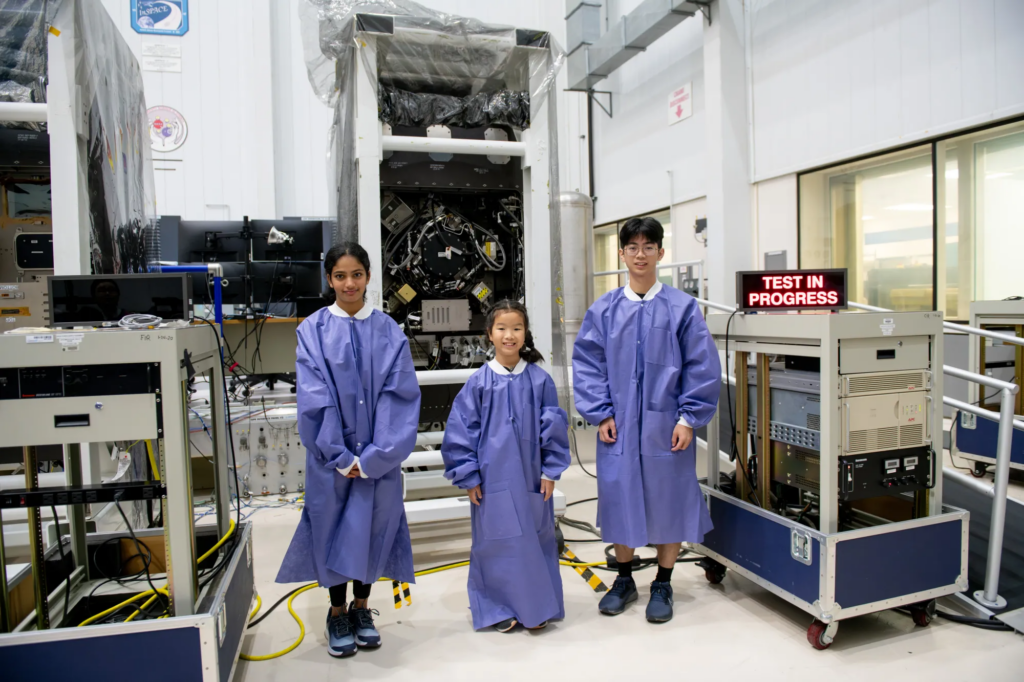NASA launched its fourth annual Power to Explore Student Challenge on November 7, 2024, allowing students to engage with the wonders of space exploration. The contest invites U.S. students from kindergarten to 12th grade to design a new nuclear-powered mission to a moon in the solar system.
This year’s focus is radioisotope power systems—nuclear batteries that have helped NASA explore the most extreme environments in space. Students will write a brief essay about their mission and how they would use these power systems to overcome challenges.
This challenge is about more than just writing. It asks students to think creatively and scientifically, exploring what it would take to send a spacecraft to some of the most inhospitable moons in our solar system.
Many of these moons are far from the Sun, with freezing temperatures, long nights, and areas where sunlight never reaches. Radioisotope power systems are the key to powering spacecraft in these dark, cold environments, making them essential for missions to distant moons.
In the essays, students must describe where their mission would go, what they would explore, and how they would use radioisotope power to keep the spacecraft running. They must also showcase their unique “power” or personal traits to help make the mission successful.
Submissions are limited to 275 words and will be evaluated in three categories: K-4, 5-8, and 9-12 grades.

The grand prize in each category is a trip for two to NASA’s Glenn Research Center in Cleveland, Ohio, where winners will learn more about the technologies that power NASA’s space missions.
Whether it wins a grand prize or not, each submission is still a step toward gaining valuable experience. All participants will receive a digital certificate.
Additionally, they will be invited to a virtual event with NASA experts. This event will offer students a deeper look into the world of space exploration and inspire them to continue pursuing their STEM education.
Radioisotope power systems have been crucial in some of NASA’s most successful missions. These power systems provide a reliable energy source in places where solar power cannot work, such as in the cold regions of space. Without them, missions to far-off moons like Europa, Titan, and Enceladus would be nearly impossible.
These moons require a continuous power source with their frozen surfaces and extreme environments. Radioisotope power systems fill this need.
NASA has used these systems to send spacecraft on journeys far beyond Earth. For example, the Voyager spacecraft, launched over 40 years ago, still uses radioisotope power to send data back from the farthest reaches of our solar system.

More recently, the Mars Perseverance rover and the New Horizons spacecraft, which made a historic flyby of Pluto, also rely on these power systems. As NASA plans new missions to moons and planets further from the Sun, these systems will remain essential to mission success.
Nicola Fox, associate administrator for NASA’s Science Mission Directorate, expressed excitement about the Power to Explore Challenge’s potential.
“Sending spacecraft into space is hard,” she said. It’s even harder sending them to extreme environments.” Fox emphasized that the challenge offers young students a chance to learn about the tools and technologies NASA uses to explore space. “We cannot wait to see what the students dream up,” she added.
The contest is designed to teach students about radioisotope power and inspire them to think creatively about space exploration. It’s an opportunity for them to learn how technology enables missions to explore the unknown.
Through this challenge, NASA hopes to spark the imaginations of future engineers and scientists. The space agency wants to show students how they can contribute to the ongoing exploration of our solar system and beyond.
For those interested in contributing to the challenge’s success, NASA and Future Engineers seek volunteers to help judge the thousands of entries expected.
Volunteers must be U.S. residents over 18 and can register to judge for approximately three hours. Judging will be an exciting way to be part of the process and encourage young minds to pursue STEM careers.
The Power to Explore Student Challenge is funded by NASA’s Science Mission Directorate’s Radioisotope Power Systems Program Office. Future engineers will manage it under the direction of NASA’s Tournament Lab, a part of the Space Technology Mission Directorate.
The partnership between NASA, Future Engineers, and other educational organizations highlights the importance of developing STEM skills in young students. NASA hopes to ensure a steady talent pipeline for future space missions by encouraging participation in this challenge.
Students interested in the challenge have until January 31, 2025, to submit their essays. The deadline gives plenty of time for students to research, think creatively, and craft their submissions.
The contest is open to all U.S. students, and the process is simple to enter. Students and interested volunteers can visit the Future Engineers website for more information about the challenge, including how to submit entries and volunteer as a judge.
NASA’s Power to Explore Student Challenge invites the next generation of space explorers to think big. Students are encouraged to develop problem-solving skills that will serve them throughout their education and future careers by engaging with real-world challenges in space technology.
The contest also reminds us of the critical role that innovation, creativity, and scientific curiosity play in pushing the boundaries of human exploration. As NASA continues to plan ambitious missions to the farthest corners of our solar system, young minds will play an essential role in shaping the future of space exploration.
For NASA, the future is bright with possibilities—and the next great space explorer could be one of the students participating in this year’s Power to Explore Student Challenge.
